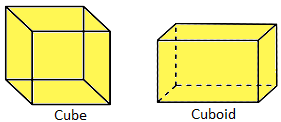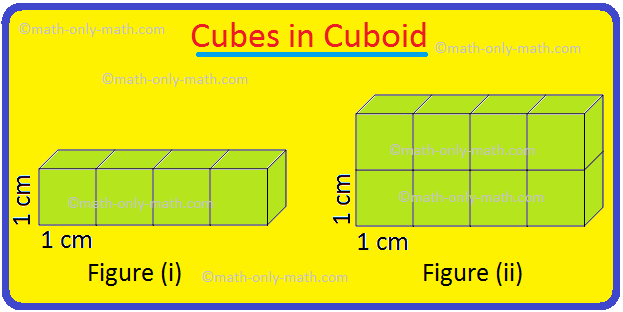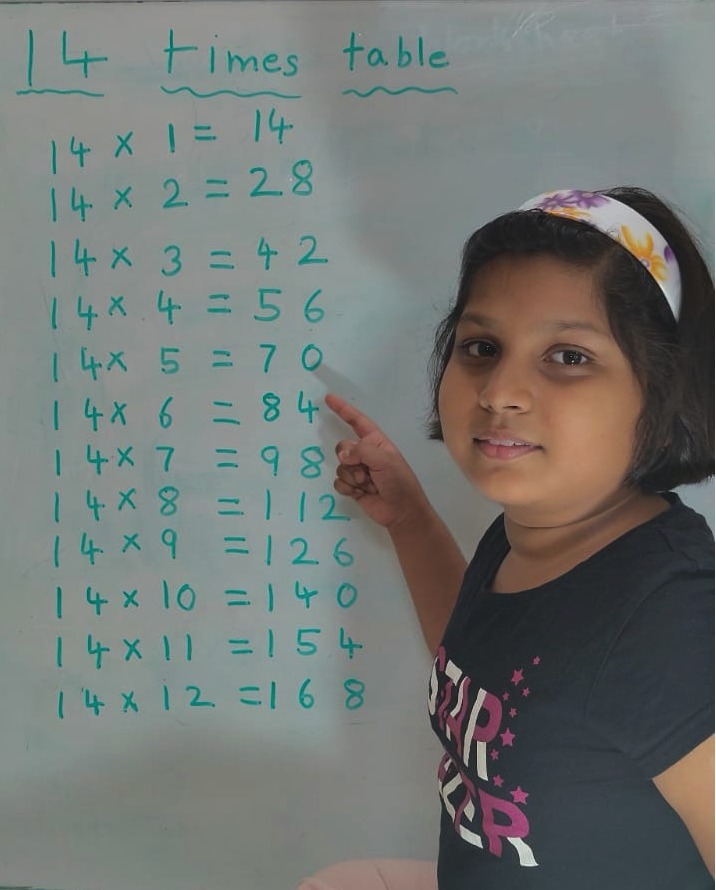Volume
Volume is the amount of space enclosed by an object or shape, how much 3-dimensional space (length, height, and width) it occupies. A flat shape like triangle, square and rectangle occupies surface on the plane. When we draw a flat shape on a paper, it occupies a certain area of paper. Solid shapes like cube, cuboid and cylinder occupy space. The amount of space occupied by a solid is called its volume.
Solid shape has length, breadth and height.
Plane figures like triangle, quadrilaterals and circles do not occupy any space because they lie on a plane. But solid figures like those given below do occupy space.
Every object that occupies space has a volume.
What is volume?
The space occupied by any object is called the volume.
So, the volume of an object is the amount of space occupied by the object.
Volume is measured in "cubic units".
Surface like the page of your book, black board, are called plane surfaces. They do not have any volume but have only area.
A cube is a solid whose length, breadth and height are equal. Therefore, a cube, is taken as the unit of solid to measure the amount of space that a solid occupies.
Consider a cube whose length, breadth and height are 1 cm. The volume of this cube is 1 cubic centimetre. It is written as cu cm or. cc. We call a cube with 1 cc volume a unit cube. We always measure volume in cubic units.
1 cc = 1 cm × 1 cm × 1 cm
For measuring the volume of a solid, we count the number of unit cubes contained by the solid.
Let us see how many cubes are there in the following cuboids.
The cuboid in figure (i) is formed by placing 4 cubes in a row. So, the volume of the cuboids is 4 cu cm.
The cuboid in figure (ii) is formed by 8 cubes. So, the volume of the cuboids is 8 cu cm or 8 cc. The cuboid formed in figure 2 has a length of 4 cm, breadth 1 cm and height 2 cm.
Therefore, the volume of the cuboid = length × breadth × height
= 2 × 1 × 2
= 8 cu cm.
● Volume.
5th Grade Geometry Page
5th Grade Math Problems
From Volume to HOME PAGE
Didn't find what you were looking for? Or want to know more information about Math Only Math. Use this Google Search to find what you need.
Recent Articles
-
Worksheet on 10 Times Table | Printable Multiplication Table | Video
Mar 21, 25 03:46 PM
Worksheet on 10 times table can be printed out. Homeschoolers can also use these multiplication table sheets to practice at home. -
5th Grade Prime and Composite Numbers | Definitions | Examples | Math
Mar 21, 25 12:18 AM
5th grade prime and composite numbers -
14 Times Table | Read and Write Multiplication Table of 14| Video
Mar 20, 25 04:03 PM
In 14 times table we will learn how to read and write multiplication table of 14. We read fourteen times table as:One time fourteen is 14 Two times fourteen are 28 Three times fourteen are 42 -
5th Grade Test of Divisibility Rules | Divisibility Rules From 2 to 12
Mar 20, 25 04:00 PM
In 5th grade test of divisibility rules we will learn about the exact divisibility of a number by the numbers from 2 to 12. The digit in the ones place should be 2, 4, 6, 8 or 0. -
5th Grade Even and Odd Numbers | Definitions | Examples
Mar 20, 25 02:45 AM
Numbers which are exactly divisible by 2 are even numbers. For example. 2,4,6,8,20,48,88, etc. are even numbers. They are multiples of 2. Numbers which are not exactly divisible by 2 are odd numbers…





New! Comments
Have your say about what you just read! Leave me a comment in the box below. Ask a Question or Answer a Question.